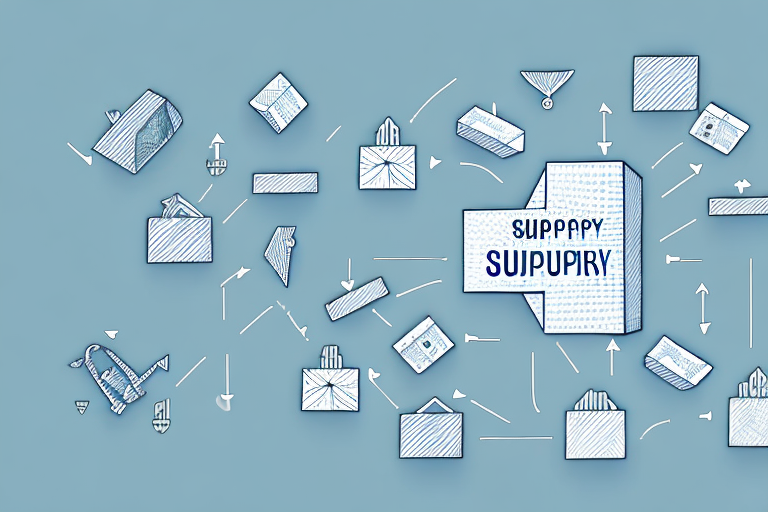Understanding the Shipper's Letter of Instruction (SLI) for Effective Supply Chain Management
If you're involved in logistics and supply chain management, you've likely encountered the Shipper's Letter of Instruction (SLI) multiple times. The SLI is a pivotal document that ensures the seamless transportation of goods, especially in the realm of international trade.
Why the Shipper's Letter of Instruction is Crucial in Supply Chain Management
The SLI delineates essential information about the shipment, including the shipper and consignee's details, specifics of the goods, carrier information, and other pertinent data. This comprehensive overview guarantees that shipments reach their destinations safely, efficiently, and in compliance with all regulatory standards.
Moreover, the SLI functions as a legal document that defines the terms and conditions of the shipment. It clearly outlines the responsibilities of the shipper, carrier, and consignee, serving as evidence in disputes or claims. By streamlining the documentation process, the SLI minimizes the risk of errors and delays, ensuring the smooth execution of supply chain operations.
According to a 2023 Supply Chain Report, accurate SLIs can reduce shipment errors by up to 30%, highlighting their significance in modern logistics.
The Basics of the Shipper's Letter of Instruction
The SLI is utilized by the shipper to provide detailed instructions to the carrier or freight forwarder on handling the shipment. Acting as a contract between the shipper and the carrier, the SLI outlines the terms of their agreement.
A critical component of the SLI is the detailed description of the goods being shipped, including quantity, weight, dimensions, and any special handling requirements. Providing precise and thorough information ensures that the carrier can manage the shipment appropriately.
Additionally, the SLI serves as a customs document, containing information such as the country of origin, value of the goods, and applicable tariffs or duties. This data is essential for customs clearance and adherence to international trade regulations.
Key Components of the Shipper's Letter of Instruction
Essential elements of the SLI include:
- Details of the shipper and consignee
- Description of the goods, including quantity, weight, and dimensions
- Place of origin and destination of the shipment
- Mode of transport used
- Required documentation for the shipment
Additionally, the SLI may encompass information about packaging, such as the type used and any special handling instructions. It can also detail payment terms and insurance coverage, making the SLI a comprehensive document that serves all parties involved in the shipment process.
How to Fill Out a Shipper's Letter of Instruction
Accurately completing the SLI is vital to ensure that the shipment is managed according to the shipper's specifications. Shippers should provide detailed and precise information, including any special instructions or requirements.
Ensuring the SLI is complete and legible is equally important, as incomplete or unclear SLIs can lead to shipment delays and potential additional fees. It's advisable for shippers to verify all information before submitting the SLI to the carrier to prevent errors or misunderstandings.
For a comprehensive guide on filling out an SLI, refer to the ShipScience SLI Guide.
Common Mistakes to Avoid When Filling Out a Shipper's Letter of Instruction
Common errors shippers make when completing the SLI include:
- Providing incomplete or inaccurate information
- Failing to specify required documents for the shipment
- Omitting special instructions or requirements
- Not verifying the information provided in the SLI
Accurate and complete SLIs are essential for the successful transportation of goods. Additional mistakes to watch out for include incorrect contact information for both shipper and consignee, and inaccurate weight and dimension details. Such errors can result in delays, extra fees, or even loss of the shipment. Therefore, it's recommended that shippers meticulously review all information in the SLI before submission.
Research from the Logistics Update Journal indicates that correcting SLI errors proactively can save companies up to 20% in potential fees.
The Role of the SLI in International Trade
The SLI is integral to international trade, serving as a legal document that outlines the agreement terms between the shipper and carrier. It provides a comprehensive record of the shipment and ensures that all necessary information is available to relevant authorities.
Furthermore, the SLI acts as proof of ownership for the shipped goods, which is crucial in cases where shipments are lost or damaged during transit. This document helps determine responsibility for any losses or damages. The SLI includes vital information such as the type and quantity of goods, destination, and mode of transportation, all of which are essential for customs clearance and timely delivery.
According to the World Trade Organization, the proper use of SLIs can enhance transparency and efficiency in international shipping practices.
Legal Requirements for the Shipper's Letter of Instruction
Legal requirements for the SLI vary depending on the country or region of the shipment. Shippers must be aware of and comply with these regulations to avoid legal complications.
Common legal requirements include providing accurate and complete shipment information, such as the type of goods, their value, and any necessary licenses or permits. Some countries may mandate that the SLI be submitted in a specific format or language. Non-compliance with these requirements can lead to shipment delays, fines, or legal action.
For detailed legal guidelines, refer to the ShipScience Legal Requirements for SLIs.
Benefits of Using a Shipper's Letter of Instruction in Your Supply Chain
Incorporating the SLI into your supply chain offers numerous benefits, including:
- Ensuring correct and efficient handling of shipments
- Providing a clear and detailed record of the shipment
- Avoiding delays and costly mistakes
- Ensuring compliance with legal and regulatory standards
- Facilitating effective communication between shipper and carrier
Moreover, utilizing an SLI helps establish a clear chain of responsibility, which is invaluable in resolving issues or disputes during the shipment process. By defining each party's roles and responsibilities, the SLI minimizes misunderstandings and ensures alignment, leading to a more efficient and reliable supply chain.
Studies from the Supply Chain Management Review have shown that effective use of SLIs can enhance overall operational efficiency by up to 25%.
Examples of How Companies Have Effectively Used the Shipper's Letter of Instruction
Several leading companies have successfully integrated the SLI into their supply chain processes, including:
- DHL - Utilizes an online tool that enables shippers to generate and manage their SLIs seamlessly.
- UPS - Offers comprehensive guidance on completing the SLI and provides an online SLI form for ease of use.
- Maersk - Implements electronic SLIs to streamline the shipping process for its customers.
Additionally, companies like FedEx have adopted systems that automatically generate SLIs, saving time and reducing errors. Schneider Electric has leveraged the SLI to optimize their international shipping processes and ensure compliance with customs regulations. These implementations have led to improved supply chain efficiency and cost reductions.
Best Practices for Managing SLIs in Your Supply Chain
To effectively manage SLIs within your supply chain, consider the following best practices:
- Accurately and completely fill out the SLI
- Verify all information provided in the SLI
- Communicate any special instructions or requirements to the carrier
- Monitor shipments to ensure proper handling
- Maintain accurate records of SLIs and shipment details
Regularly reviewing and updating your SLI process is crucial to meeting your supply chain's evolving needs. This can involve gathering feedback from carriers and other stakeholders, identifying areas for improvement, and implementing necessary changes. Continuous improvement of your SLI process can significantly reduce errors, minimize delays, and enhance overall supply chain efficiency.
For more insights on managing SLIs, explore the ShipScience Best Practices Guide.
Future Trends in Shipper's Letter of Instruction and Supply Chain Management
As technology advances, the SLI and other shipping documents are expected to undergo further digitization. This will enhance efficiency for shippers in managing their supply chains and ensuring regulatory compliance.
Another emerging trend is the increased collaboration between shippers and carriers through real-time data sharing. This advancement will provide greater visibility and control over the entire supply chain, reducing delays and enhancing operational efficiency.
Environmental sustainability is also becoming a significant focus within the shipping industry. Shippers are increasingly adopting technologies and practices that minimize the carbon footprint of their operations. Collaborating with carriers to implement sustainable solutions will be essential for meeting environmental responsibility goals.
In conclusion, the Shipper's Letter of Instruction remains a vital document in supply chain management, particularly in international trade. Shippers must ensure accurate and complete completion of the SLI, avoid common mistakes, and stay informed about legal requirements. Effective management of SLIs leads to safe, efficient, and compliant transportation of goods.
For a deeper understanding of future trends and how to adapt your supply chain practices, visit the ShipScience Future Trends page.




















